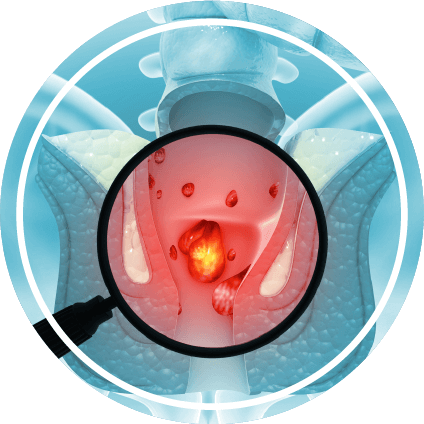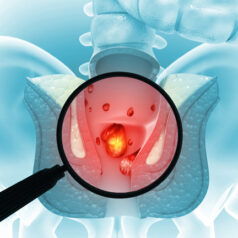
Interventional radiology uses groundbreaking and versatile techniques like embolization
for life-changing alternatives to diagnosing and treating a wide range of conditions.
Treatment Options
Embolization is at the forefront of medical innovation, revolutionizing treatment options
for health issues that once trequired major surgery, such as:
Interventional radiology is not limited to certain treatments. Anything from arthritis to tumors can be treated or managed
with this approach, because many conditions involve vascular access points in the body. The potential is vast. Additional
uses of interventional radiology and embolization include:
Recent breakthroughs in technology have opened up even more treatment options,
which means that more options for patients can be on the horizon.
FAQs About IR & Embolization
- Minimally Invasive: No major incisions, reducing recovery time and minimizing risks associated with surgery.
- Preservation of Healthy Tissues: Targets specific areas, preserving surrounding healthy tissues. The magic of the treatment happens through very small incisions, so recovery is much faster.
- Outpatient Care: Often performed as an outpatient procedure, allowing patients to return home the same day. As an added benefit, doctors are able to spend more time with patients and provide more personalized care in an outpatient setting.
- Reduced Complications: Lower risk of complications compared to traditional and major surgeries.
- Experience Life-Changing Solutions with Interventional Radiology
Embrace the future of medical care through interventional radiology and the transformative power of embolization. Take the first step towards non-surgical, effective treatments that prioritize your well-being. These procedures have transformed the way that we view and treat certain diseases. If you have been told that you are not a candidate for surgery, or if you prefer to avoid more invasive surgery, endovascular intervention offers treatment options with shorter recovery times and reduced complications.
- Experience Life-Changing Solutions with Interventional Radiology
Embrace the future of medical care through interventional radiology and the transformative power of embolization. Take the first step towards non-surgical, effective treatments that prioritize your well-being. These procedures have transformed the way that we view and treat certain diseases. If you have been told that you are not a candidate for surgery, or if you prefer to avoid more invasive surgery, endovascular intervention offers treatment options with shorter recovery times and reduced complications.
- Experience Life-Changing Solutions with Interventional Radiology
Embrace the future of medical care through interventional radiology and the transformative power of embolization. Take the first step towards non-surgical, effective treatments that prioritize your well-being. These procedures have transformed the way that we view and treat certain diseases. If you have been told that you are not a candidate for surgery, or if you prefer to avoid more invasive surgery, endovascular intervention offers treatment options with shorter recovery times and reduced complications.


Using the Vascular Network
Interventional radiology is a remarkable medical sub-specialty that utilizes minimally-invasive, image-guided procedures to diagnose and treat a wide range of conditions via the body’s vascular network.
There is a growing need for safer, cost-effective, and efficient healthcare, and few methods
offer the same versatility and precision found with interventional radiology.
Treatment Options
Hemorrhoids
Hemorrhoids are swollen and inflamed veins in the rectum or anus that can cause discomfort, pain, itching, bleeding, and difficulty during bowel movements. Embolization offers a minimally invasive approach to treating hemorrhoids by targeting the blood vessels supplying them. By cutting off the blood flow, the hemorrhoids shrink and reduce in size, alleviating symptoms.
During the treatment, a catheter is inserted into the blood vessels and embolic agents are introduced to the area. Patients can return to normal activities sooner, and since hemorrhoids often recur for some patients, embolization offers an alternative that can be safely repeated without the disruption of surgery.


Gastrointestinal Bleeding
By blocking abnormal blood vessels causing gastrointestinal bleeding, embolization helps control and manage this condition, often without the need for surgery.
Pelvic Congestion Syndrome
For individuals experiencing pelvic pain due to pelvic congestion syndrome, embolization provides relief by blocking problematic veins, reducing discomfort and pressure.


Get back to the things
you love.
© Copyrights 2024 Orange County Hemorrhoid Clinic, All Rights Reserved | Privacy Policy | ADA Disclaimer | Sitemap | Powered by: Dynamo Web Solutions






